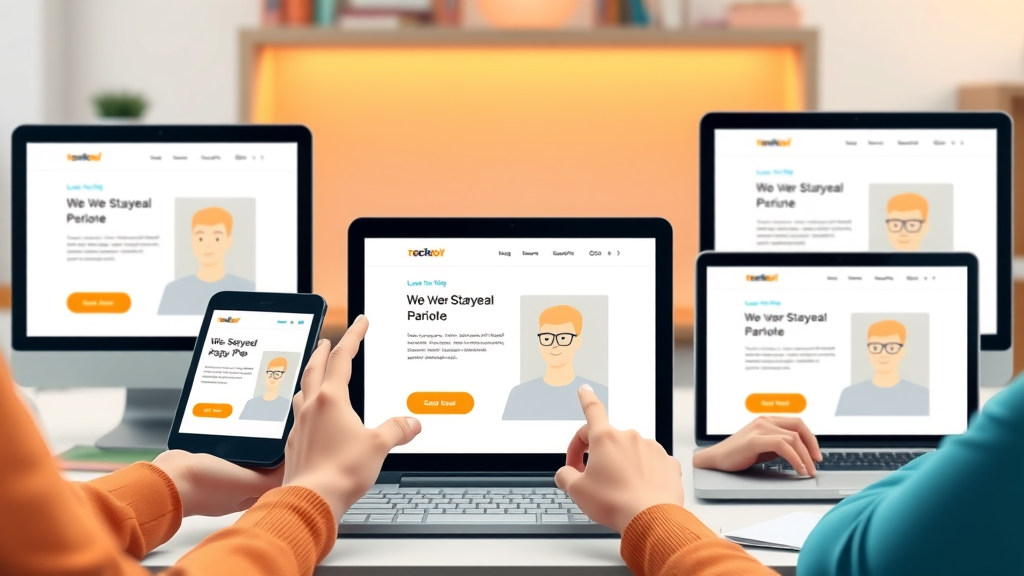Did you know that over 68% of sales funnels underperform, wasting budgets and missing sales targets? My year-long journey rebuilding 20 funnels taught me firsthand why most fail—and which proven strategies actually transform clicks into paying customers. If you’re ready to demystify why funnels make (or break) online growth, read on for up-to-date tactics and lessons no one else is sharing.
Why Most Sales Funnels Fail: The Eye-Opening Reality (Startling Statistic)
A Startling Fact: Over 68% of Sales Funnels Underperform (And How to Avoid It)
Despite the widespread adoption of sales funnels , research and my own experience point to a sobering truth: 68% of sales funnels never deliver the desired results . But why do so many marketers invest in funnel building only to watch conversions lag? It often boils down to missing key fundamentals across each funnel stage. For instance, unclear value propositions confuse the potential customer, while poor transitions cause leads to drop off before they’re ready to make a purchase. When businesses fail to follow up with an effective email campaign or ignore the needs of their target audience, their funnel leaks value at every turn.
This isn’t just academic—during my year rebuilding over 20 funnels, the pattern was shockingly consistent. Even strong offers and slick-looking landing pages fizzled if the underlying structure, targeting, or follow-through was weak. Repeatedly, I saw that only by strategically diagnosing and optimizing every funnel stage could I consistently turn underperformers into revenue-driving machines. If you’re ready to stop the cycle of underwhelming conversion rates, let’s explore why these pitfalls matter and how to fix them.

- Unclear value proposition
- Inefficient funnel stage transitions
- Low-converting landing pages
- Weak email campaign follow-ups
- Failure to target the right audience
Defining Sales Funnels: The Core of Every High-Converting Campaign
What Is a Sales Funnel?
The term sales funnel describes the journey your potential customer takes from discovering your product or service to becoming a paying customer. Think of it like a carefully architected path, built to capture attention, nurture interest, and convert leads into sales. At each stage of the funnel, your marketing campaign needs to deliver value appropriate to where the prospective customer is on their journey, whether that means sparking first-time curiosity in the awareness stage or clinching the deal at the bottom of the funnel.
A robust funnel isn't just about lead generation—it's about building a sales process that’s predictable, repeatable, and scalable. With a well-crafted sales funnel template, you gain clarity on which marketing tactics to deploy at every point, whether you’re launching a free trial, offering a demo, or nurturing interest through an educational email campaign. The best sales funnels align tightly with your target audience’s needs , continually refining each funnel stage based on real-world performance data. This keeps your funnel pipeline healthy and poised for consistent growth.

Sales Funnel Stages: Understanding the 5 Essentials
| Stage | Description | Key Conversion Metrics |
|---|---|---|
| Awareness | Prospects learn about your brand | Impressions, clicks |
| Interest | Prospects engage with your content | Time on page, downloads |
| Decision | Prospects weigh their options | Webinar signups, demos |
| Action | Purchase or key conversion occurs | Sales, registration |
| Retention | Post-purchase engagement | Repeat sales, reviews |
Exploring the Awareness Stage of Sales Funnels
The awareness stage represents the critical first contact between you and your potential customers. Here, your goal is to cast a wide net—leveraging social media , targeted ads, or valuable blog content to introduce your brand and spark curiosity. In my experience, campaigns with a crystal-clear message, well-crafted value proposition, and direct call-to-action saw much higher impression and click rates. Don’t underestimate the power of first impressions: a singular, relatable message often outperforms flashy creatives or generic offers. Remember, at this point, many prospects are comparing you with competitors, so your unique voice matters.
I found that using helpful resources—free guides, webinars, or short explainer videos—was essential for capturing the attention of my target audience . Monitoring key metrics such as impressions, clicks, and engagement time helped me gauge which messages resonated and which to refine. The biggest lesson? People only move deeper into the funnel if you genuinely address their needs and pain points in this stage . Nailing this sets the foundation for all subsequent funnel stages.

Interest Stage: How to Nurture Leads and Move Them Down the Sales Funnel
Once you’ve captured your potential customers’ attention, the interest stage is where nurturing begins. Here, the focus shifts from broad awareness to fostering a genuine connection and guiding leads to consider your offer seriously. Well-crafted content—like case studies, success stories, and valuable email resources—serves as the trust-building bridge between prospect and sales team. During my 20-funnel rebuild, I discovered that businesses who matched their content to where the lead was in the funnel not only raised their engagement, but also improved their conversion rate further down the line.
The key to excelling in this funnel stage is to provide clear educational value, tailored to your audience. Use marketing automation tools to personalize content, segment your leads by behavior, and trigger targeted email campaigns based on their interests. I consistently saw significant improvements by making every touchpoint relevant—moving the right prospects further down the funnel, while politely filtering out those who were not a fit. At this stage, measuring engagement metrics like time on page, downloads, and social shares will reveal how well you’re holding your leads’ interest.
Mapping Out a High-Converting Sales Funnel: Lessons From 20 Funnels Rebuilt
Breaking Down the Sales Funnel Template for Effective Results
Building a sales funnel is more than stacking pages together. It’s about designing an end-to-end sales funnel template that guides your potential customer through each step of the sales process. From my experience, creating a visual funnel map for every campaign was pivotal for clarity and execution. You should begin with your end goal (usually a sale or a registration) and reverse-engineer each funnel stage required to achieve it. For each point—awareness, interest, decision, action, retention—define the key message, offer, and call-to-action before moving to content creation or design.
An effective funnel template does more than streamline your sales pipeline; it provides a reference framework for content alignment, analytics setup, and team collaboration. For each funnel I rebuilt, clearly identifying weak spots using this approach helped me launch split tests, refine landing pages, and update email campaign elements far more effectively than simply guessing. The result? Funnels that not only looked clean, but converted consistently, thanks to goal-driven logic at every stage.

Real Case Studies: Sales Funnel Examples That Worked (and Why)
Concrete examples bring funnel theory to life. In one case, I rebuilt a SaaS funnel for a free trial offer that initially converted at just 1.2%. By overhauling the landing page, clarifying messaging, and setting up a triggered email campaign sequence, the conversion rate jumped to 3.4% in two months. The difference-maker? Strategic step-by-step nurturing through each funnel stage , plus frequent performance reviews and rapid iteration using real world data. In another project for an e-commerce store, adding product video demos and buyer testimonial sections on the decision-stage page delivered a marked bump in sales and customer reviews—because prospects felt reassured and informed at every step of the customer journey.
From these and other real-life funnel rebuilds, it’s clear a one-size-fits-all model doesn’t work. The best results come when you adapt your sales funnel template to your industry, offer, and audience feedback. Don’t underestimate the power of structure: a well-structured sales funnel is the backbone of transformative online business growth.
"A well-structured sales funnel is the backbone of transformative online business growth."
Landing Page Optimization: The Gateway of Successful Sales Funnels
Critical Elements for a Powerful Landing Page within Sales Funnels
Your landing page is the make-or-break moment in any sales funnel. Even the best funnel design falters if the landing page fails to convert. From my work with 20+ funnel rebuilds, standout landing pages shared several critical traits: a clear and bold headline; a supporting subheadline that directly addresses the target customer’s pain point; visual cues (funnel graphics, step indicators) showing where the visitor is in the process; irresistible and brightly colored call-to-action buttons; and ample social proof, such as client testimonials or media badges. Each element serves a single purpose—to move the potential customer confidently to the next stage of the funnel.
I found that split-testing headlines and CTA button copy was especially effective for increasing conversion rates. Embedding a touch of interactivity—like progress bars or visual confirmation when an action is completed—also improved engagement. But above all, landing pages that removed distractions and focused the visitor on a singular, high-priority action performed best. Review your landing pages with a critical eye: If the goal isn’t clear within five seconds, it’s time to optimize.
- Clear headline
- Engaging subheadline
- Visual funnel template cues
- Strong call-to-action buttons
- Social proof and testimonials

Measuring Landing Page Success: Conversion Rate Benchmarks in Sales Funnels
The conversion rate of your landing page is one of the purest metrics of funnel health. If your page isn’t converting visitors into leads or customers, even the slickest upstream marketing campaign won’t matter. To know how you stack up, it helps to benchmark your results against industry norms. For example, e-commerce landing pages typically convert around 2.6%, while B2B businesses average about 3.5%, and education-related offers can double that at 5.2%. During my rebuilds, a process of careful analytics monitoring, A/B testing, and ongoing iteration reliably moved underperforming pages closer to or above these averages.
Keep in mind, these benchmarks are just starting points. The key to breakthrough growth is regular measurement and relentless optimization—every small improvement compounds over time. Don’t let a "set it and forget it" mentality slow your momentum. Instead, aim to learn from each campaign so that you’re continually climbing above the conversion rate curve in your niche.
| Industry | Avg. Landing Page Conversion Rate |
|---|---|
| E-commerce | 2.6% |
| B2B | 3.5% |
| Education | 5.2% |
Creating Your Funnel Template: Best Practices From 20 Sales Funnels Rebuilt
Adaptable Sales Funnel Template Examples for Any Industry
There’s no one-size-fits-all solution in the world of sales funnels . However, during my journey of building and fine-tuning templates, I noticed adaptable frameworks reveal repeating patterns that work across B2B, SaaS, e-commerce, and education. For instance, start with a lead magnet or low-friction offer at the top of your funnel—such as a free trial for SaaS, a downloadable checklist for B2B, or a coupon for e-commerce. In each vertical, this kickstarts the awareness and interest stages . The middle of the funnel is all about nurturing—that’s where webinar invitations, educational series, or product comparison guides shine. Finally, complete your template by simplifying the path to conversion through clear pricing, risk-reversal elements (like a money-back guarantee or no credit card required trial), and simple checkout or signup forms.
Regardless of your industry, the best sales funnel template examples I tested prioritized the customer journey over flashy design. Each step was mapped to audience intent, pain points, and buying triggers. This adaptability ensures your funnel will remain effective as you iterate, grow, and respond to new market feedback over time.
Expert Tips on Customizing Your Sales Funnel Template for Maximum Impact
To maximize the impact of your funnel, customization is essential. My top recommendation: begin with in-depth research on your target audience —their needs, language, and preferred buying triggers. Next, map out each funnel stage visually and anchor every piece of content (ads, emails, landing pages, video demos) to a clear stage and goal. Aligning content and offers with where prospects are in the funnel ensures a smoother transition and higher conversion rate.
Finally, never stop testing. Use analytics and A/B test results to refine each stage, and don’t hesitate to update your funnel template to reflect new customer feedback. This cycle of feedback and adjustment ensures you’re always moving closer to a funnel that converts at the highest possible level. Here’s a practical sequence to implement when building a sales funnel template:
- Clearly define your target audience
- Map each sales funnel stage
- Align content and offers with funnel stages
- Use analytics to test and iterate

Nailing Email Campaigns in Sales Funnels: High-Conversion Communication
How to Write Email Campaigns That Guide Leads Down the Sales Funnel
A strategically crafted email campaign is the linchpin connecting each stage of the funnel . My most successful funnels consistently used personalized, timely messages that spoke directly to where potential customers were in their journey. Start by mapping each email to a funnel stage—awareness emails introduce your brand, interest emails deepen understanding with educative content, decision emails address objections or offer social proof, and action emails entice a final conversion with incentives such as a free trial or exclusive bonus. Don’t forget follow-up—and at the bottom of the funnel, deliver value and support to foster retention and referrals.
During my rebuilds, testing everything from subject lines to call-to-actions drove higher open, click-through, and conversion rates. Using marketing automation, I could trigger emails based on behavioral data, nurturing leads in a personalized way. The key takeaway: emails should never be generic. Relevance, timing, and authenticity are the engines of higher response rates and more paying customers.
Segmenting Your Audience: The Secret to Email Campaign Success
Segmentation is the “secret weapon” behind my highest-performing email campaigns . By organizing your audience based on demographics, interests, behaviors, or funnel stage , you can craft messages that feel truly personal and timely. For example, leads who visited a pricing page might receive an email highlighting a special offer or addressing objections; recent webinar registrants could get deeper-dive resources that guide them toward a purchase decision.
Marketing automation and smart CRM tools make segmentation possible at scale, allowing you to build tailored journeys that maximize conversion rate . As I discovered across multiple industries, segmented campaigns consistently converted 3-6 times better than one-size-fits-all messaging. Remember— personalization is not just a luxury; it’s a requirement for high-performing sales funnels .
"Personalized email campaigns drive 6x higher conversion rates in well-built sales funnels."

Analyzing Funnel Stages: How Data Drives Continuous Sales Funnel Improvement
Sales Funnel Metrics: Tracking Conversion Rate and Funnel Stage Drop-Off
The health of your funnels depends on what you measure. Start by tracking the overall conversion rate from visitors to lead and from lead to paying customer. However, the real gold is hidden in the funnel stage transition rates : where do people drop off, and why? For example, if your landing page bounce rate is high, revisit your headline, offer, or call to action. If your email open and click-through rates are low, refine your subject lines and segment more tightly.
Here’s a checklist of the core metrics I track in every funnel rebuild:
- Overall conversion rate
- Funnel stage transition rates
- Landing page bounce rate
- Email campaign open and click-through rates
Don’t just focus on the big picture—drill down to the stage of the funnel where people lose momentum and optimize relentlessly. The more granular your metrics, the faster you’ll identify leaks and growth opportunities.
Tools for Sales Funnel Analysis: What I Used and Why
Modern analytics tools have revolutionized the way we diagnose sales funnels . Google Analytics remains foundational for tracking traffic and conversions, but pairing it with funnel visualization platforms (like Mixpanel or Funnelytics) provides a clearer picture of stage-by-stage drop-off. For email campaign insights, I turned to tools like Mailchimp, ActiveCampaign, and HubSpot—each offering advanced segmentation, automation, and reporting.
One key lesson: Choose tools that integrate seamlessly with your sales and marketing workflow, enabling you to connect data across channels (website, landing pages, email, social media) for a unified view of the customer journey . Don’t be afraid to test new platforms and switch if current tools limit your visibility or speed. The right analytics stack ultimately pays for itself in the form of actionable insights and measurable growth.

Target Audience Focus: Aligning Sales Funnels With Customer Needs
Identifying and Segmenting Your Target Audience in Every Funnel Stage
Laser focus on the target audience underpins every high-converting funnel I’ve built. The best sales funnels map each stage to precise segments—from broad demographics in the awareness stage to granular behaviors at the action and retention stages. Start by creating detailed personas, leveraging research, surveys, and analytics, to understand exactly who you’re targeting and what motivates them. Next, use these personas to filter audiences in your ad platforms, segment email lists, and personalize landing page content for each segment.
Throughout my rebuilds, I noticed the closer the funnel content and offers aligned with a segment’s real-world needs, the higher both engagement and conversion rates climbed. Make audience segmentation a living process: refresh, update, and refine personas based on actual performance feedback—never on assumptions alone. This strategy will ensure relevance at scale, fueling every funnel stage with hyper-targeted, conversion-ready traffic.

How to Optimize Sales Funnels Based on Audience Insights
Optimization is an ongoing process, driven by real insights. Once you’ve segmented your audience and analyzed stage-level data, you must adapt your funnel template and messaging accordingly. For example, if data shows your educational content performs best for a younger demographic, consider expanding similar resources. Or, if you notice decision-stage prospects need more reassurance, amplify social proof or offer risk-free incentives (like a free trial or money-back guarantee).
In my rebuilds, feedback loops via surveys, user testing, and direct customer interviews provided invaluable qualitative data for optimizing targeting and messaging. Sometimes, tweaks as simple as headline language or the imagery on a landing page yielded outsize improvements in both interest and conversion. The critical takeaway: Always listen to the real audience, not just analytics dashboards. Their insights fuel the breakthroughs that transform ordinary sales funnels into exceptional revenue engines.
People Also Ask: Sales Funnels Answered
What is a sales funnel?
A sales funnel is a step-by-step process that turns potential customers into paying customers, guiding them through stages of awareness, interest, decision, action, and retention. Each funnel stage is designed to move prospects closer to making a purchase by addressing their specific needs and concerns at every step of the customer journey.
What are the 5 stages of the sales funnel?
The 5 stages of a sales funnel are:
- Awareness : Potential customers discover your brand or offer.
- Interest : They engage with your content and evaluate what you offer.
- Decision : Leads weigh their options and may compare you to competitors.
- Action : Prospects take the desired step, such as making a purchase or registering.
- Retention : Post-purchase communication encourages repeat business and referrals.
How do I make a sales funnel?
To make a sales funnel , start by defining your target audience and mapping out each stage—detailing what content, offers, and actions you want at each point. Build tailored landing pages, set up segmented email campaigns, track key performance metrics, and iterate based on performance data and real customer feedback. Testing and optimization are key to building a sales funnel that converts.
Is a sales funnel a CRM?
No, a sales funnel is not the same as a CRM. The funnel refers to the buyer’s journey and the steps you guide prospects through, while CRM (Customer Relationship Management) software helps manage prospect and customer data, segment audiences, and automate follow-ups. However, a CRM can support your funnel by improving follow-up, data tracking, and personalization at every funnel stage.
Building and Refining Sales Funnels: Key Takeaways From a Year of Rebuilding
- Test each funnel stage independently
- Integrate feedback loops
- Use funnel templates but iterate for your audience
- Prioritize conversion rate optimization
"The difference between a good and a great sales funnel is relentless optimization and real customer focus."

Frequently Asked Questions About Sales Funnels
How often should I update my sales funnel?
Review and update your sales funnel at least quarterly, but ideally every month based on performance data, customer feedback, and market changes. Proactive optimization keeps your funnel relevant and ensures you capitalize on emerging opportunities.
Should all businesses use sales funnels?
Yes, almost any business with a product or service to sell benefits from implementing sales funnels . They help structure the sales and marketing process, improve lead generation and nurturing, and maximize conversions and customer lifetime value across industries.
What are common mistakes with sales funnels?
Common mistakes include an unclear value proposition, failing to segment the target audience, neglecting email follow-up, using generic content for all funnel stages, and ignoring conversion rate metrics. Avoid these by taking a customer-first, data-driven approach and continually refining each stage of your sales funnel template.
Ready to Accelerate Your Success? Free Strategy Session for Your Sales Funnels
- Analyze your current sales funnels
- Identify quick-win optimizations
- Book your free marketing strategy session to learn how custom-built sales funnels can transform your business.
- Visit: https://aaronmills.marketing/
"A well-executed sales funnel doesn't just increase sales—it establishes your business as an industry leader."
Video: The Art of the High-Converting Sales Funnel
Video: Funnel Template Breakdown—Step-by-Step Walkthrough
Video: Landing Pages That Convert—Live Case Study Analysis
Action Step: Don’t settle for average results—commit to continuous funnel optimization, audience feedback, and tailored email campaigns. Put these insights into practice today to elevate your sales funnel from good to great.
In my journey of rebuilding 20 sales funnels over the past year, I discovered that a well-structured sales funnel is crucial for guiding potential customers from initial awareness to final purchase. For a comprehensive understanding of sales funnels and how to build one effectively, consider reading “What Is a Sales Funnel? How To Build One in 2025” . This resource provides detailed insights into creating a sales funnel that turns prospects into paying customers and boosts conversion rates. Additionally, “What is a sales funnel?” offers a visual metaphor for the path taken by a potential customer, helping businesses understand and visualize their sales process and measure overall conversion success between each step of the funnel. If you’re serious about optimizing your sales process, these resources will provide valuable strategies and insights.
 Add Row
Add Row  Add
Add 



Write A Comment